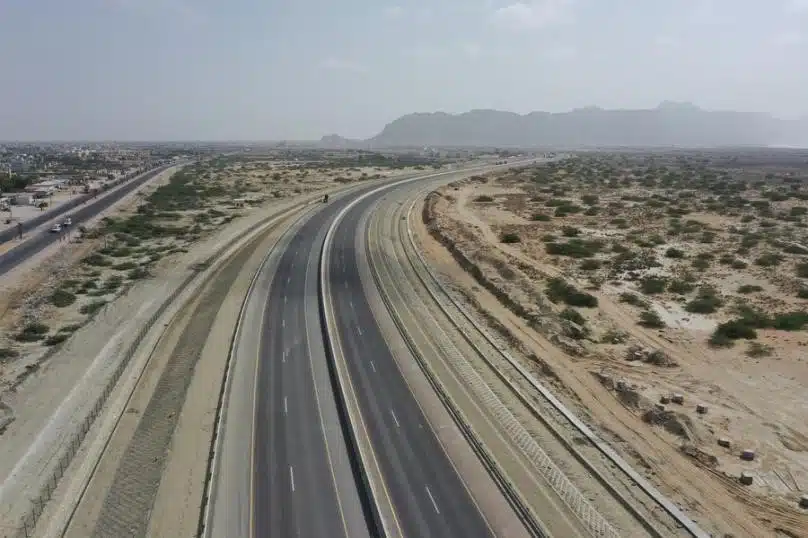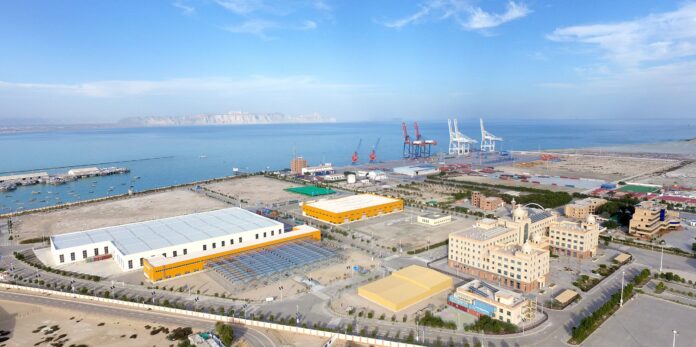An orderly process of cargo loading and unloading is taking place at the Gwadar deepwater port in southwest Pakistan, accompanied by the breeze from the Arabian Sea and the sound of sirens. On the Eastbay Motorway that connects to the port, trucks are travelling from this developing port to all areas of the nation.
Gwadar deep seaport, a flagship project of the China-Pakistan Economic Corridor (CPEC), is ready to take on a bigger role in regional and international trade. Port Steven Ahmed was moved to say, “Business volume has expanded dramatically since the beginning of this year, from bulk cargo of agricultural items to containerized commodities like fertilisers and livelihood supplies to staple products like liquefied petroleum gas. Everybody here is busier than ever. Gwadar Port completed 1,162 TEUs of container throughput and 506,800 metric tonnes of bulk cargo throughput in the first half of this year.
According to Zamir Ahmed Awan, founding chair of the Islamabad-based think tank Global Silk Route Research Alliance, “Gwadar Port is increasingly developing into a regional logistics hub, effectively connecting with the Middle East, Central Asian countries, and China, creating opportunities for the integrated development of Pakistan and regional countries.”
In addition to being a port, Gwadar links China’s western economic zones to the sea. One such zone is Kashgar, which is only 2033 kilometres from Gwadar but 4500 kilometres from the seaport in Shanghai.

The Middle East accounts for over 60% of China’s oil imports, and the opening of the Gwadar port cuts the maritime journey’s distance from 16000 km to 5000 km and its duration from 45 days to 10 days. Through this possibility, Pakistan will gain since it is predicted that CPEC will produce transit revenue of USD 70 billion annually through Gwadar port.
2,281 acres of land have already been allotted to the Gwadar Port Free Zone for the construction of infrastructure. The project’s initial phase, covering 60 acres, is finished. In the Free Zone, 46 businesses have registered, and 3 have begun operations.
On June 22, 2022, the 19-kilometre Eastbay Motorway, which connects the Free Zone with the system of National Highways for easy logistical transportation of import, export, and transit commodities, was officially opened. The majority of fishermen would gain from the motorway’s inauguration, according to Akbar Reis, the chairman of the Gwadar Fisheries Association. It opens a crucial logistics route for trade at the Gwadar Port. We place a lot of importance on this road since it shields fishing boats from storms and thunderstorms in the ocean. This road will make it easier to move commodities from the port to major cities.
The CPEC has now opened its development gate in Gwadar, also known as “the gate of wind” in Urdu. The port’s advancement as a centre of commerce is seen on land as well as in the water. The New Gwadar International Airport (NGIA) is poised to become a transformative force in global connectivity and trade as it becomes fully operational.
“The packaged lobsters can be flown to China the next morning after the new airport is fully operational!” Nagman, the head of the Gwadar Chamber of Commerce and Industry, is eager to use the new airport in the future to export lobsters to China. Together with Gwadar Port and the Eastbay Motorway, the new airport will provide a cutting-edge three-dimensional transportation network by water, land, and air once it is completely operational.










